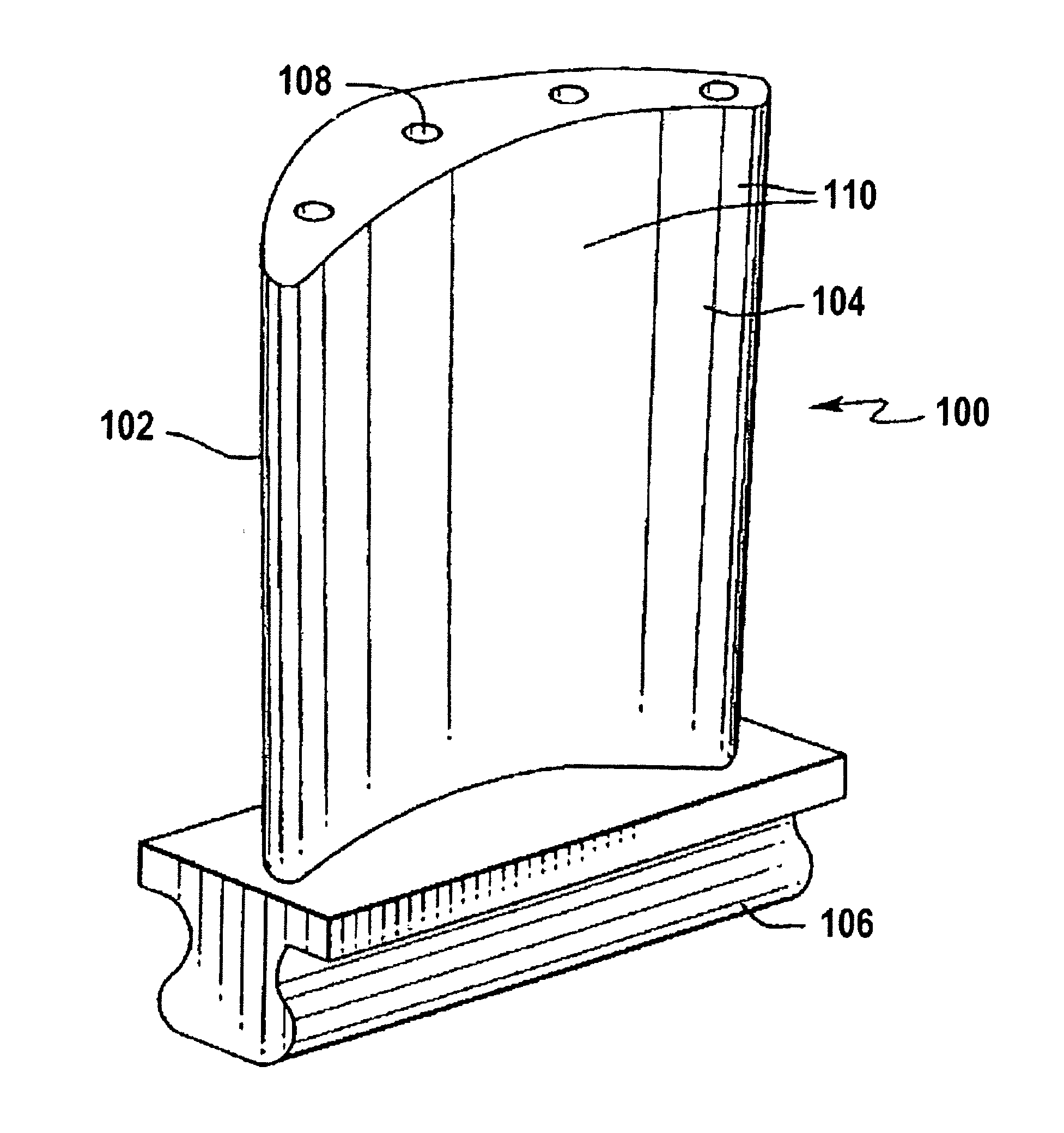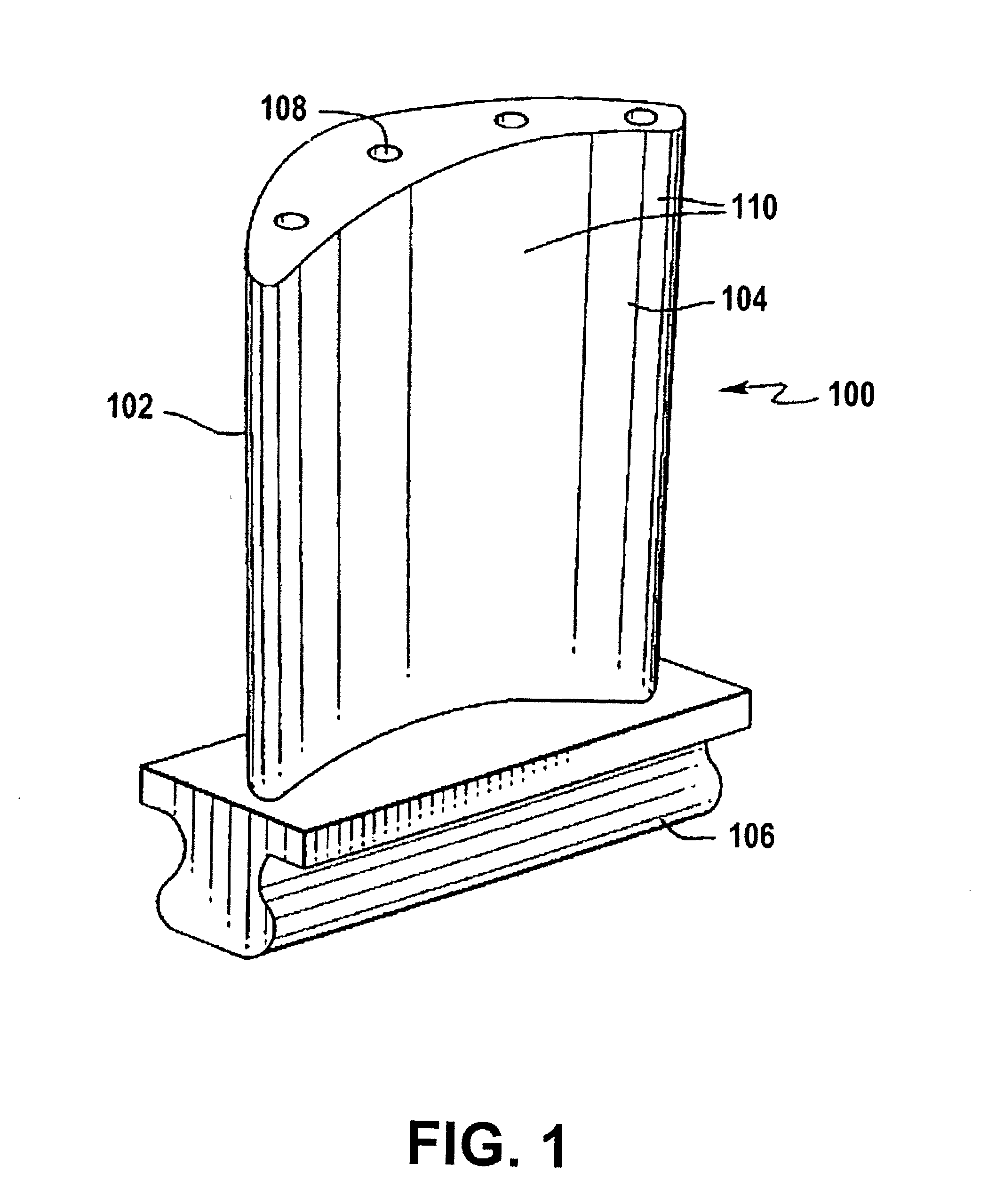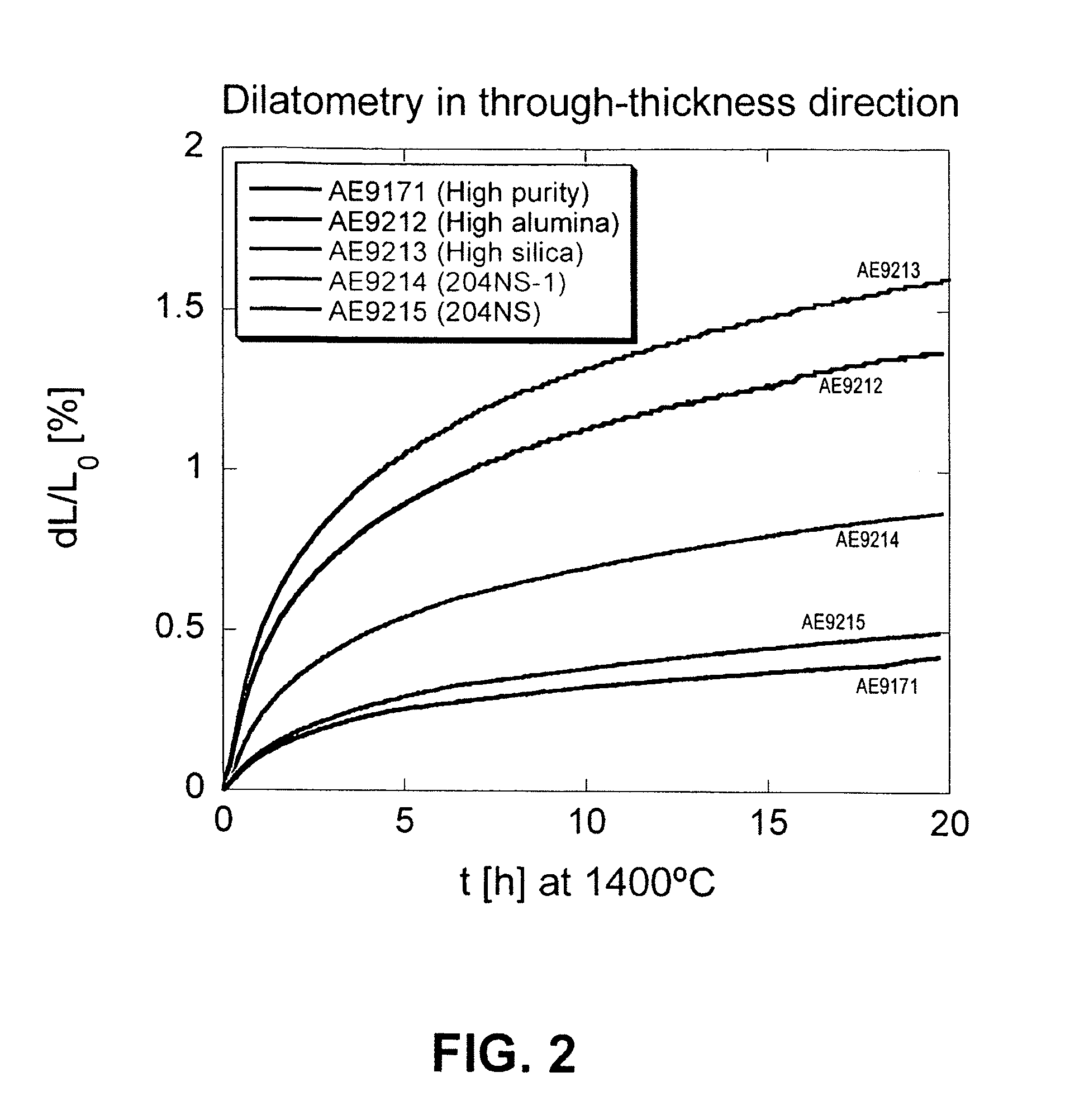Ceramic material for high temperature service
a ceramic material and high temperature technology, applied in the direction of blade accessories, machines/engines, textiles and paper, etc., can solve the problems of greater than the bond strength, the structure formed upon coating manufacture changes, and the thermal barrier cannot function, so as to achieve a greater effect on performan
- Summary
- Abstract
- Description
- Claims
- Application Information
AI Technical Summary
Benefits of technology
Problems solved by technology
Method used
Image
Examples
Embodiment Construction
[0031]Reference will now be made in detail to the preferred embodiments of the invention, examples of which are illustrated in the accompanying drawings.
[0032]In an exemplary use of a material of the invention, FIG. 1 shows one component of a turbine. Turbine blade 100 has a leading edge 102 and an airfoil section 104, against which hot combustion gases are directed during operation of the turbine, and which undergoes severe thermal stresses, oxidation and corrosion. A root end 106 of the blade anchors the blade 100. Venting passages 108 may be included through the blade 100 to allow cooling air to transfer heat from the blade 100. The blade 100 can be made from a high temperature resistant material. The surface of the blade 100 is coated with a thermal barrier coating 110 made of ultra-pure zirconia (ZrO2) and / or hafnia (HfO2) alloys in accordance with the invention. The thermal barrier coating 110 may be applied on, for example, a MCrAlY bonding layer with an alumina scale (not sh...
PUM
| Property | Measurement | Unit |
|---|---|---|
| length | aaaaa | aaaaa |
| particle size | aaaaa | aaaaa |
| weight percent | aaaaa | aaaaa |
Abstract
Description
Claims
Application Information
 Login to View More
Login to View More - R&D
- Intellectual Property
- Life Sciences
- Materials
- Tech Scout
- Unparalleled Data Quality
- Higher Quality Content
- 60% Fewer Hallucinations
Browse by: Latest US Patents, China's latest patents, Technical Efficacy Thesaurus, Application Domain, Technology Topic, Popular Technical Reports.
© 2025 PatSnap. All rights reserved.Legal|Privacy policy|Modern Slavery Act Transparency Statement|Sitemap|About US| Contact US: help@patsnap.com



